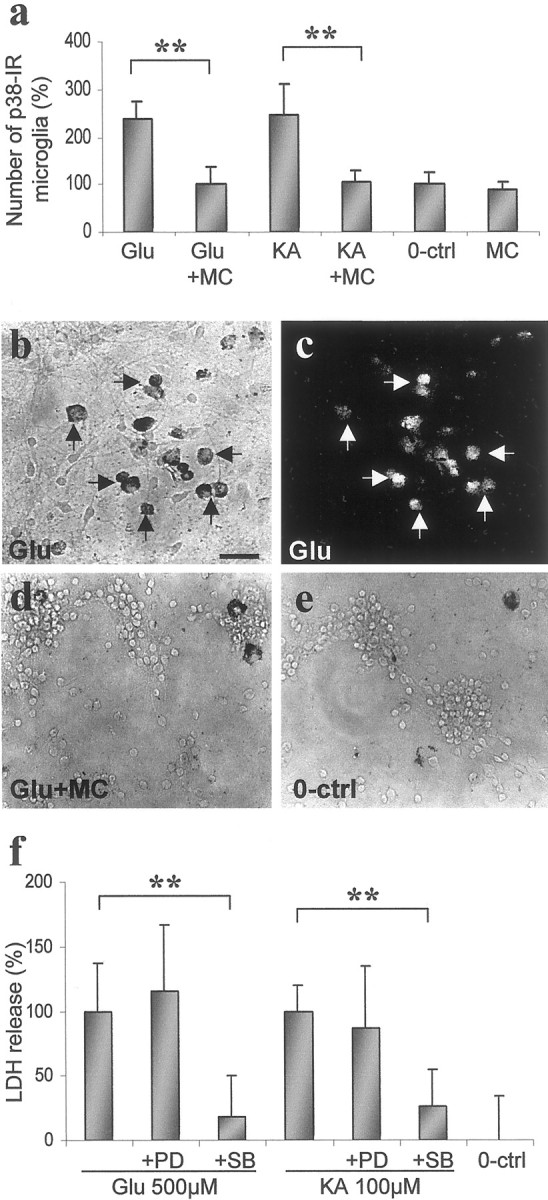Fig. 3.

Minocycline (MC) treatment inhibits activation of p38 MAPK in microglia at neuroprotective doses, and inhibition of p38 MAPK is neuroprotective in SC cell cultures.a, Quantitation of phospho-p38 MAPK-immunoreactive microglia in SC cell cultures after 10 min stimulation with 500 μm glutamate (Glu) and 100 μm kainate (KA) with and without 0.02 μm minocycline treatment. Both glutamate and kainate increased the number of immunoreactive cells within 10 min. Minocycline decreased the induced p38 MAPK activity in microglial cells. Data are presented as the mean ± SD counted in a blind manner from three independent experiments (n = 9). **p < 0.01; single-factor ANOVA.b–e, Representative photomicrographs of the effect of glutamate and minocycline on phospho-p38-immunoreactive (p38-IR) cells of SC cell cultures. Double-staining with phospho-p38 (b) and OX-42 (c) antibodies indicates that p38 MAPK activity is increased by glutamate stimulation only in microglia. Scale bar, 200 μm. f, LDH release induced by 500 μm glutamate and 100 μm kainate (24 hr) was reduced by 10 μmSB203580 (SB), a specific p38 MAPK inhibitor, but not by 10 μm PD98059 (PD), a specific p44/42 MAPK inhibitor. Data are presented as the mean ± SD from three independent experiments (n = 10–13). **p < 0.01; single-factor ANOVA.0-ctrl, Unexposed 0 control.
